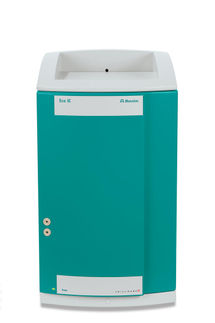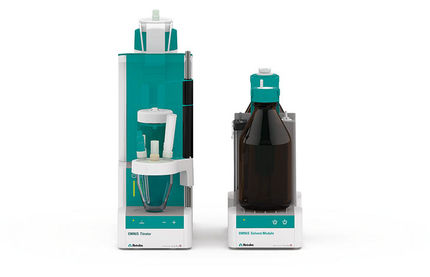To use all functions of this page, please activate cookies in your browser.
my.chemeurope.com
With an accout for my.chemeurope.com you can always see everything at a glance – and you can configure your own website and individual newsletter.
- My watch list
- My saved searches
- My saved topics
- My newsletter
Title 21 CFR Part 11Title 21 CFR Part 11 of the Code of Federal Regulations deals with the FDA guidelines on electronic records and electronic signatures in the United States. Part 11, as it is commonly called, defines the criteria under which electronic records and electronic signatures are considered to be trustworthy, reliable and equivalent to paper records. Practically speaking, Part 11 requires drug makers, medical device manufacturers, biotech companies, biologics developers, and other FDA-regulated industries, with some specific exceptions, to implement controls, including audits, validation systems, audit trails, electornic signatures, and documentation for software and systems involved in processing many forms of data as part of business operations and product development. The rule also applies to submissions made to the FDA in electronic format (i.e. a New Drug Application) but not to paper submissions by electronic methods (i.e. faxes). It specifically does not require the 21CFR1 requirement for record retention for tracebacks by food manufacturers. Most food manufacturers are not otherwise explicitly required to keep detailed records, but electronic documentation kept for HACCP and similar requirements must meet these requirements. As of 2007, broad sections of the regulation have been challenged as excessive, and the FDA has stated in guidance that it will exercise enforcement discretion on many parts of the rule. This has led to confusion on exactly what is required, and the rule is being revised. In practice, the requirements on access controls are the only part routinely enforced. The "predicate rules" which required the records to be kept in the first place are still in effect. If electronic records are illegible, inaccessible, or corrupted the manufacturers are still subject to those requirements. If a regulated firm keeps "hard copies" of all required records, the paper documents are considered to be the authoritative document for regulatory purposes and the computer system need not meet these requirements. Product highlight
Content
History
Various keynote speeches by FDA insiders early in the 21st century (in addition to high-profile audit findings focusing on computer system compliance) resulted in many companies scrambling to mount a defense against rule enforcement that they were procedurally and technologically unprepared for. Many vendors of software and instrumentation released Part 11 "compliant" updates, which proved to be either incomplete or insufficient to fully comply with the rule. Complaints about the wasting of critical resources, non-value added aspects, in addition to confusion within the drug, medical device, biotech/biologic and other industries about the true scope and enforcement aspects of Part 11 resulted in the FDA release of:
This document was intended to clarify how Part 11 should be implemented and would be enforced. But, as with all FDA guidances, it was not intended to convey the full force of law--rather, it expressed the FDA's "currently thinking" on Part 11 compliance. Many within the industry, while pleased with the more limited scope defined in the guidance, complained that, in some areas, the 2003 guidance contradicted requirements in the 1997 Final Rule.
In May 2007, the FDA issued the final version of their guidance on computerized systems in clinical investigations. This guidance supersedes the guidance of the same name dated April 1999; and supplements the guidance for industry on Part 11, Electronic Records; Electronic Signatures — Scope and Application and the Agency’s international harmonization efforts when applying these guidances to source data generated at clinical study sites. FDA had previously announced that a new Part 11 would be released late 2006. The Agency has since pushed that release date back. The FDA has not announced a revised time of release. John Murray, member of the Part 11 Working Group (the team at FDA developing the new Part 11), has publicly stated that the timetable for release is "flexible." See also
Sources
References
|
|
| This article is licensed under the GNU Free Documentation License. It uses material from the Wikipedia article "Title_21_CFR_Part_11". A list of authors is available in Wikipedia. |







